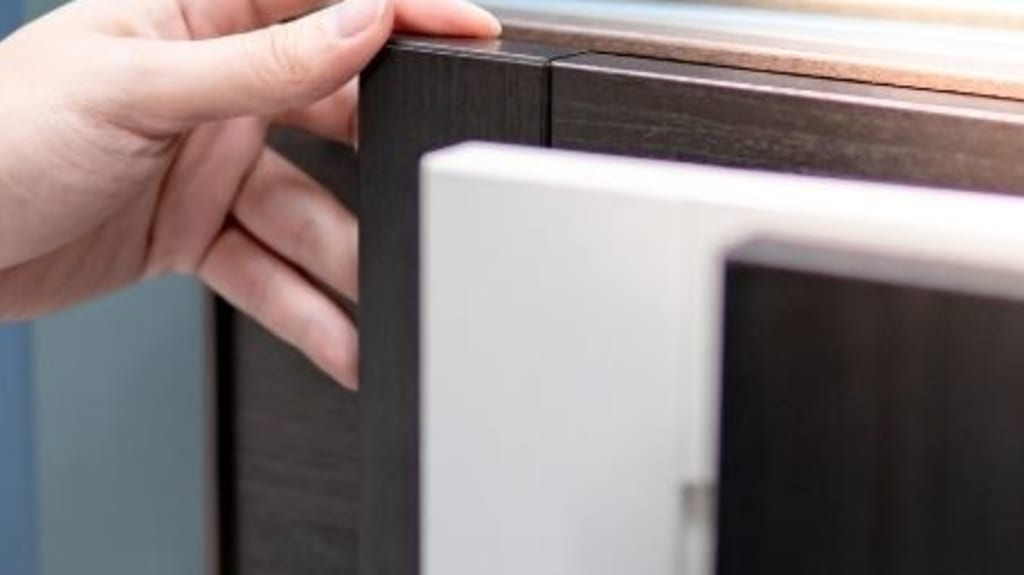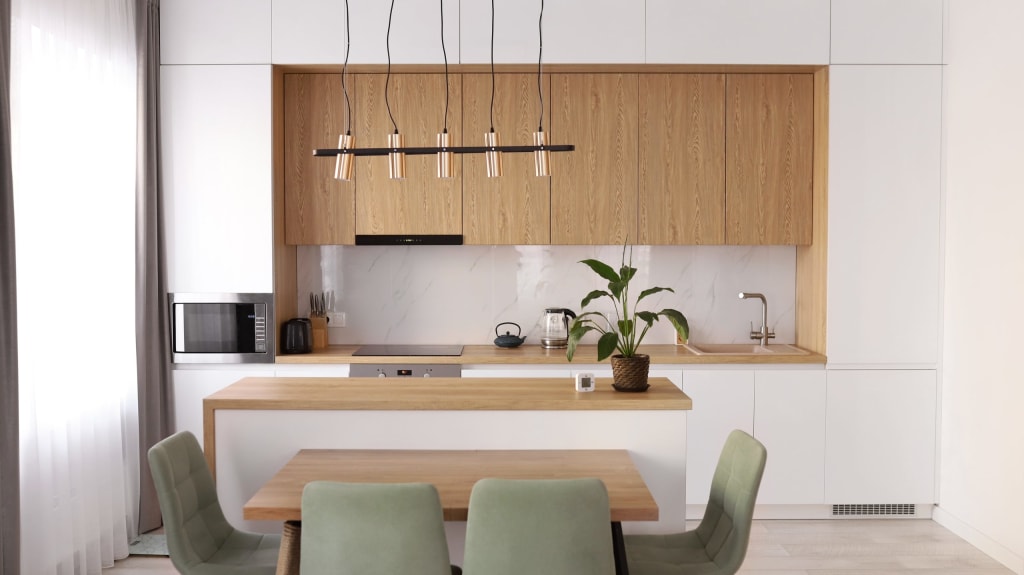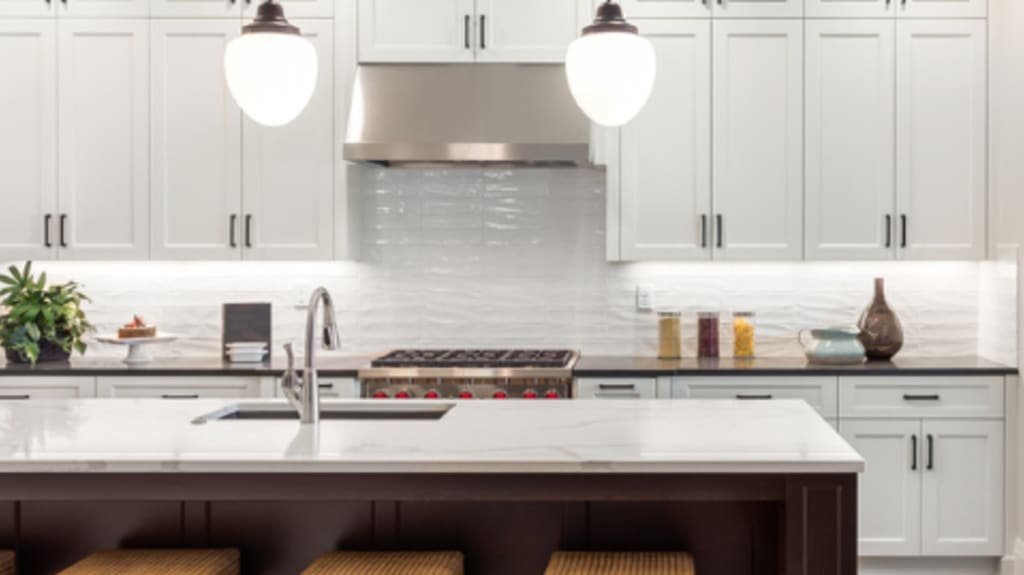Remodelling your kitchen is a rewarding process, but it can be overwhelming too. If you’re in the midst of a remodel or are thinking about revamping your kitchen, the cabinets are a great place to start. Once you’ve decided on materials and style, it’s time to consider which kitchen cabinet finishes fit the aesthetic of your kitchen. Certain professionally done finishes and techniques can drastically change the look and feel of your cabinets, allowing you to achieve the kitchen you’ve always dreamed of. But there’s more to consider than just the final look. Price and upkeep are two major factors you need to consider. Below we’ll break down the best kitchen cabinet finishes and techniques to make your decision as easy as possible.
How to choose the best kitchen cabinet finish
When choosing which finish is best for your kitchen cabinets, the decision will be based mostly on personal preference. That said, there are a few key considerations that will help make your decision a little easier. So, before you settle on the perfect finish, here are some questions to ask yourself, your designer, or your contractor.
How much maintenance and upkeep will this finish require?
How easy is it to clean cabinets with this finish?
Does this finish match my current kitchen aesthetic?
Will this finish affect the way my cabinets look or function?
Will this finish protect my cabinets from moisture and mould?
How durable is this finish?
Once you know the answers to these questions, it’s easier to narrow down your options.
What are the different types of cabinet finishes?
From stains to paints, clear glazes, and more, there are several types of kitchen cabinet finishes to choose from. Ranging in required skillset, affordability, and style, there’s a kitchen cabinet finish that is sure to suit the needs of any kitchen.
Stains
Stains are applied to cabinet doors to enhance the natural beauty of wood. Unlike paint, kitchen cabinet stain doesn’t fully cover up wooden material. Instead, the stain works to enhance the wood’s pre-existing traits, striking the perfect balance between texture and colour. Stains are available in a variety of colours, some subtle and others more dramatic. As the name implies, stains literally stain the wood. In addition to altering the colour, stains also add a layer of protection for your cabinets. Stains are typically applied using a cloth or a paint brush.

Paints
Painting your kitchen cabinets is not a new concept. But there are several paint varieties to choose from and not all of them are ideal for kitchen cabinet finishes. Typically, professionals avoid paints with an eggshell or flat finish. These paints make your cabinets difficult to clean and more susceptible to scratches and scuff marks. Instead, they recommend gloss or semi-gloss paints. These paints are durable, easy to clean, and have an elegant sheen that will help reflect light in your kitchen. Most paints are opaque, and the final effect will be different depending on if you apply it to smooth or coarse wood. Sometimes the wood grain will be partially visible, too.

Glazes
Glazes are applied on top of stained or painted kitchen cabinets. Glaze sets into the corners and crevices of your cabinets to give them a deeper, more interesting look. There are two types of glazes you can choose from: flooded and penned. Flooded glaze is applied to the entire cabinet and then wiped off the areas you don’t want to highlight. Penned, on the other hand, is applied by hand only to the areas you wish to highlight. Flooded glaze may be less time consuming but penned glaze gives you more control over how the final cabinet will look.

Varnishes
Most kitchen cabinet manufacturers apply varnish as a topcoat to provide extra durability and heat resistance. Natural cabinets such as wood need varnish as a bare minimum finish to protect them. A major benefit to varnish is its resistance to age-related yellowing. Varnishes are also known to last longer than most finishes without chipping or cracking, keeping your kitchen cabinets in pristine shape for years to come. Varnish helps to accentuate the grain of wooden cabinets. Although it’s typically clear, you can find pigmented varnish that will slightly alter the colour of your cabinets as well.

Lacquers
Lacquers are a solvent-based, water-resistant option for kitchen cabinets. They are available in three different finishes: matte, medium gloss, and high gloss. The process for lacquer kitchen cabinets involves applying multiple thin layers of lacquer paint to your wooden kitchen cabinets. The end result can be opaque or have a sheer tint similar to a stain. Lacquer finishes dry quickly and will protect your cabinets from water damage and flaking for years.

Waterborne finish
Waterborne finishes, while on the expensive side, are a durable and eco-friendly option for your kitchen cabinets. They have less of an odor than other solvent-based competitors. Waterborne finishes feature fewer volatile organic compounds and are easy to clean with just soap and water. The final product should look similar to varnished, stained, or painted cabinets.

Natural
Natural wood finishes don’t use anything that alters the colour of the wood; they’re usually clear to showcase the wood’s natural grain and texture. A natural finish highlights unique variations in each piece of wood, meaning your cabinets won’t be entirely uniform. To achieve a natural finish, professionals alternate between sanding and oiling the wood.

What are the different types of cabinet finishing techniques?
After you’ve settled on a finish that works for you, the cabinetmaker or skilled professional will need to consider how the finish will be applied. There are several kitchen cabinet finishing techniques to consider, each with its own set of advantages and disadvantages. These are some of the most popular techniques.
Antiquing (or heirlooming)
To put it simply, antiquing gives kitchen cabinets a charming worn-out look. This technique involves oversanding the edges and profile of your cabinets, then applying layers of paint or glaze to further highlight and darken the over sanded areas. Antiquing or heirlooming is ideal if you’re going for a vintage kitchen theme.

Burnished
Burnished finishes achieve a natural aged look that many homeowners enjoy. This technique is a multi-step process that involves random distressing, over sanding, and glazing or staining. If you’re aiming for a warm, traditional kitchen aesthetic you should consider burnished cabinets.

Distressing
Similar to antiquing, distressed kitchen cabinets have a naturally worn look to them. Professionals achieve this look by sanding or scraping random sections of paint off your cabinets. They may choose to use alternative materials like hammers or chains to add dents, scrapes, tiny holes, and other distressed features to your cabinets as well. Using this technique ensures no two cabinets look exactly the same. Distressing is an excellent way to give your kitchen a rustic aesthetic.

Hewn (or vintage touch)
Hewn is a technique that involves lightly sanding the raised edges and corners of your cabinets. Similar to but more subtle than burnishing and antiquing, hewn cabinets produce a naturally aged look suitable for cottages and other rustic spaces.

Iced top coat
Opalescent and super shimmery, iced top coats are an interesting finishing technique to transform kitchen cabinets. Iced top coats have a sleek, futuristic look and feel that’s perfect for hyper modern kitchens. Iced top coats can be applied over top of any finish, glaze, or paint to give it a frosted appearance. This finishing technique is not for everyone, and many kitchen cabinet companies suggest seeing iced top coats in person before choosing them.

Timeworn
Timeworn is a light distressing technique that uses tiny dents, wormholes, cracks, and more to replicate signs of natural wear. The goal is to make your cabinets appear aged and well-loved. Timeworn cabinets are often finished with a glaze for added protection. This technique is best for wooden cabinets and pairs well with other rustic wood furniture.

Weathered
This finishing technique makes cabinets look reclaimed or as if they’ve been exposed to the elements. To achieve the weathered cabinet look, simply apply a base colour then run a paint brush overtop of the paint. Professionals focus each brush stroke in the same direction, as they want visible streaks to show through. The final product should have depth and movement.

Frequently asked questions
What is the best colour for kitchen cabinets?
Ultimately, colour is a matter of preference. As a general rule, you should aim for colours that match or complement your existing kitchen decor.
What colour cabinets will look best with stainless steel appliances?
A warm-toned colour like brown is ideal when you have stainless steel appliances. Brown adds a natural element and balances out the cooler shades of stainless steel. If you’re looking for something ultra sleek and modern, black, or white pair well with stainless steel as well.
What is the most durable kitchen cabinet finish?
While there are several durable kitchen cabinet finishes, waterborne finishes are arguably the most durable option.
Creating the perfect kitchen
Now that you have a stronger understanding of the various types of kitchen cabinet finishes and techniques available, you’re ready to tackle the rest of the room. Need some ideas? Why not check out some of our past kitchen renovation projects for inspiration or the latest kitchen trends. If you’re in the planning phase, check out our kitchen remodel checklist or explore kitchen renovation costs. And, when you’re ready to pick the finishing touches, don’t forget to check out our recommendations for functional and aesthetic kitchen must-haves.





